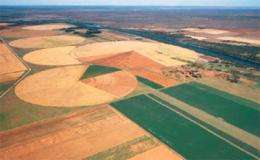New method shows the best locations in Africa for improving maize yields

By using a combination of geographic information systems (GIS) and statistical analysis, researchers can determine the areas in Africa where the chances of improving the maize harvest are better or worse. LEI, part of Wageningen UR, has developed a method for finding the hot spots and cold spots for maize cultivation.
In Africa there are huge differences between the potential and actual maize yields. This difference, known as the yield gap, is related to farmers' degree of access to the market and the amount of artificial fertilisers farmers use. The report Mapping maize yield gaps in Africa shows how LEI researchers looked for hot spots (clusters of areas with high yield gaps) and cold spots (clusters of areas with low yield gaps).
Good market access and high use of artificial fertilizer generally results in a low yield gap and vice versa. But LEI's method shows that this is not the case everywhere. In some areas, good market access and high use of artificial fertilizer result in a high yield gap. In these areas, some other factor is limiting the maize yield. The fact that area boundaries often correspond to administrative borders would seem to indicate that political-institutional factors play a part.
LEI's method can help support specific development aid interventions. For instance, it can be used to point out areas where it would be useful to start up index-based weather insurance.
Provided by Wageningen University

















